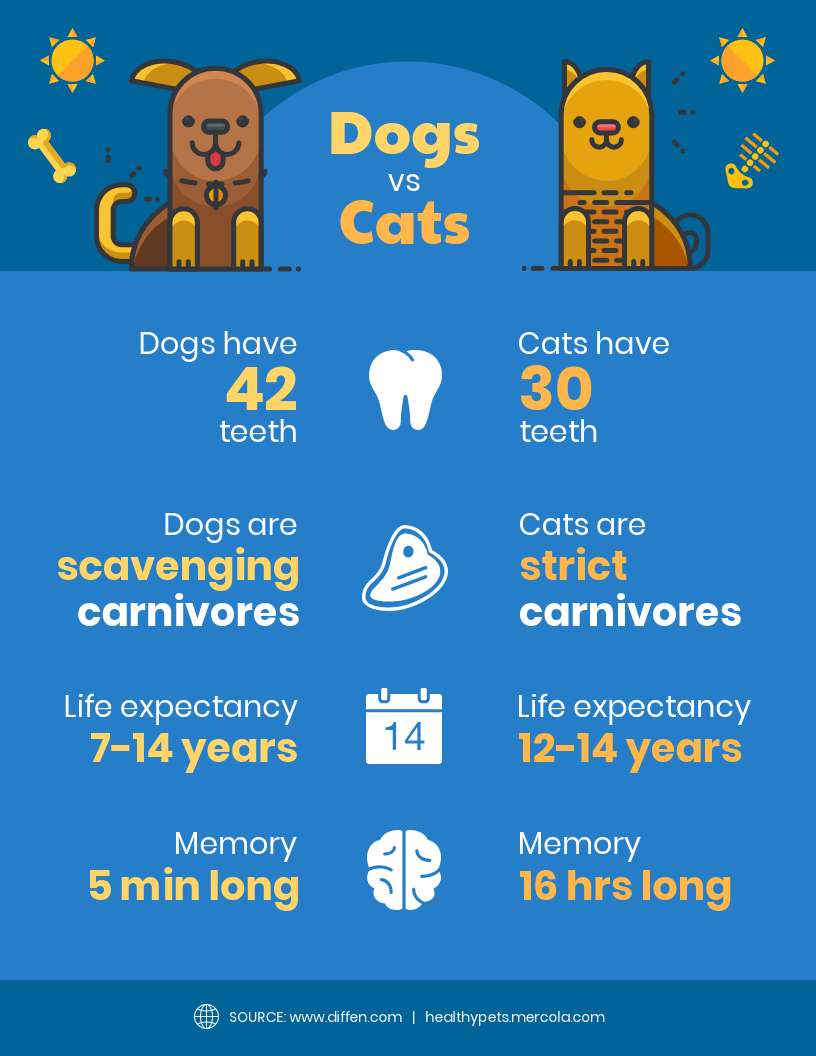Compare & Contrast
A Compare and Contrast essay can generally be written by listing characteristics and organizing the essay’s structure before starting to write.
Listing
What things are you comparing/contrasting? (Countries? Foods? Animals? The ideologies behind different teaching styles? Different methods of measuring nitrogen in a plant?) List all the characteristics of the two (or however many) subjects you are comparing. Writing them in separate columns helps.
Just as an example:
Try to have more than this—list as many as possible!
While looking through your list, do you find more similarities or more differences between the two subjects? Whichever you find more of will be the focus of your essay. (If your assignment requires you to compare and contrast, then you will be doing both.)
Organizing Your Essay
After listing the characteristics, the next step is organizing the essay’s structure. A Compare and Contrast essay can be organized by differences, similarities, or both. (Grouping them together with bullet points can help make things easier.)
Differences
For example, if I wrote about the differences between laptops and desktop computers, I would try to focus on these three main differences (though you definitely can use more, if you want):
- Laptops are usually smaller.
- Laptops are generally cheaper.
- Laptops usually have less power.
…and for desktops,
- Desktops are usually bigger.
- Desktops are generally more expensive.
- Desktops usually have more power.
If you’re writing about differences, try to discuss the pros and cons of each difference. Make sure to balance out the number of pros and cons on each side.
Similarities
If you chose to discuss similarities in your paper, make much of your paper about why you think these two subjects are similar. If I wrote about the similarities between laptops and desktops:
- Hardware
- They both have monitors.
- They both have keyboards.
- They both have batteries, RAM, CPU/GPU, etc.
- They both have Input/Output (or I/O) capability. Various types of external drives, like USB cables, can connect to both.
- Software
- They both can be used to work from home.
- Office (Excel/Google Sheets, Word/Google Docs, etc.)
- Zoom (and related videoconferencing software)
- They both run Operating Systems (OS).
- They both can be used to work from home.
Combined
If you chose to discuss both similarities and differences in your paper, then you could start from a similarity-style outline and continue the differences from there. For example, continuing with my laptops-and-desktops essay (with additions in italics):
- Hardware
- They both have monitors.
- But since laptop monitors are generally smaller than desktop monitors, laptops are much more portable.
- They both have keyboards.
- But some laptop keyboards are prone to overheating.
- They both have batteries, RAM, CPU/GPU, etc.
- But desktops usually have more RAM than laptops.
- They both have Input/Output (or I/O) capability. Various types of external drives,
like USB cables, can connect to both.
- Since laptops are getting thinner, they don’t usually have as many external ports (or as many different types of external ports) as desktops. However, having too many external ports on desktops can make plugging anything very confusing.
- They both have monitors.
- Software
- They both can be used to work from home.
- Office (Excel/Sheets, Word/Docs, etc.)
- Zoom (and related videoconferencing software)
- But working from home drains laptop batteries, while desktops can simply be plugged into the wall.
- They both run Operating Systems (OS).
- But operating systems usually run faster on desktops.
- They both can be used to work from home.
(I am not an expert on laptops or desktops, so these generalizations are not always true. However, this is just an example.) Experiment with different organizational structures and pick whichever one makes the most sense for your topic.
After organizing the essay, you’re ready to write! Just don’t forget to have a list of transition words.

Compiled By
Terrell Page
Writing Studio Consultant
2021
